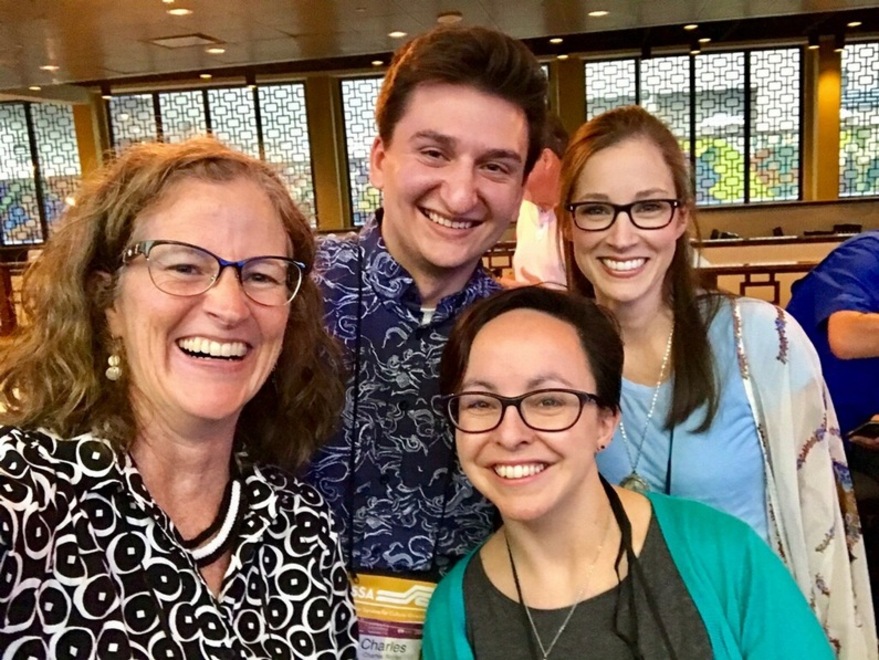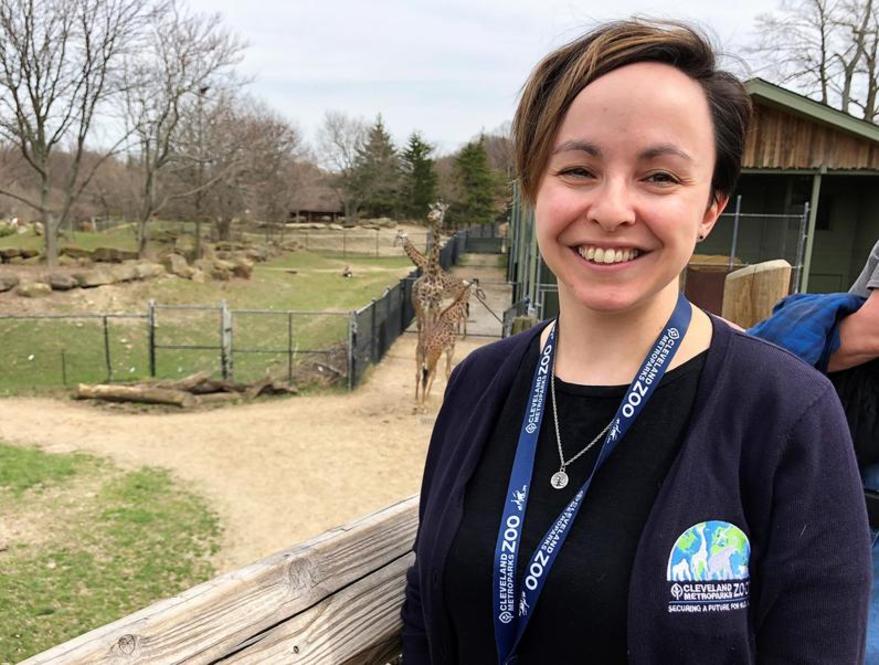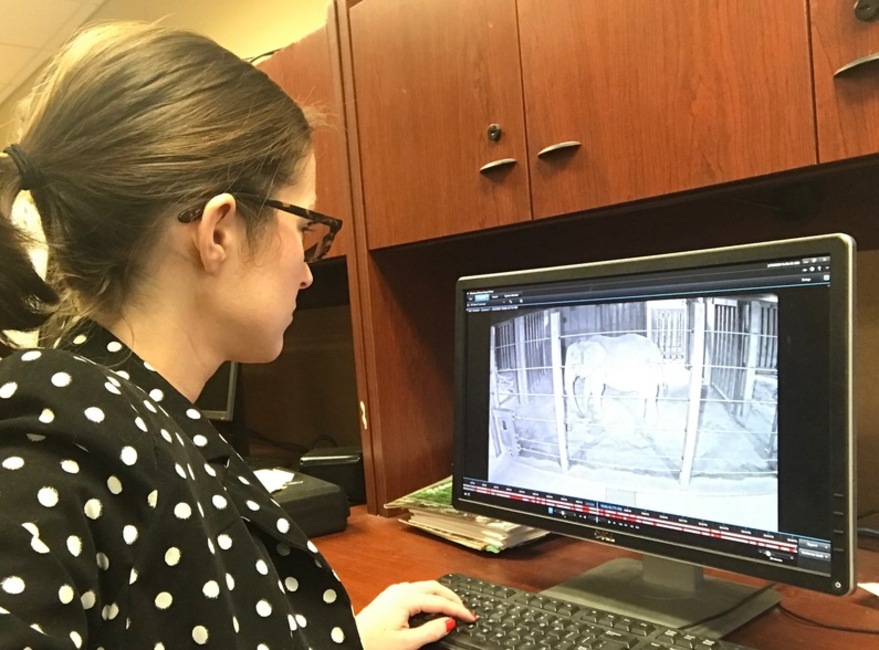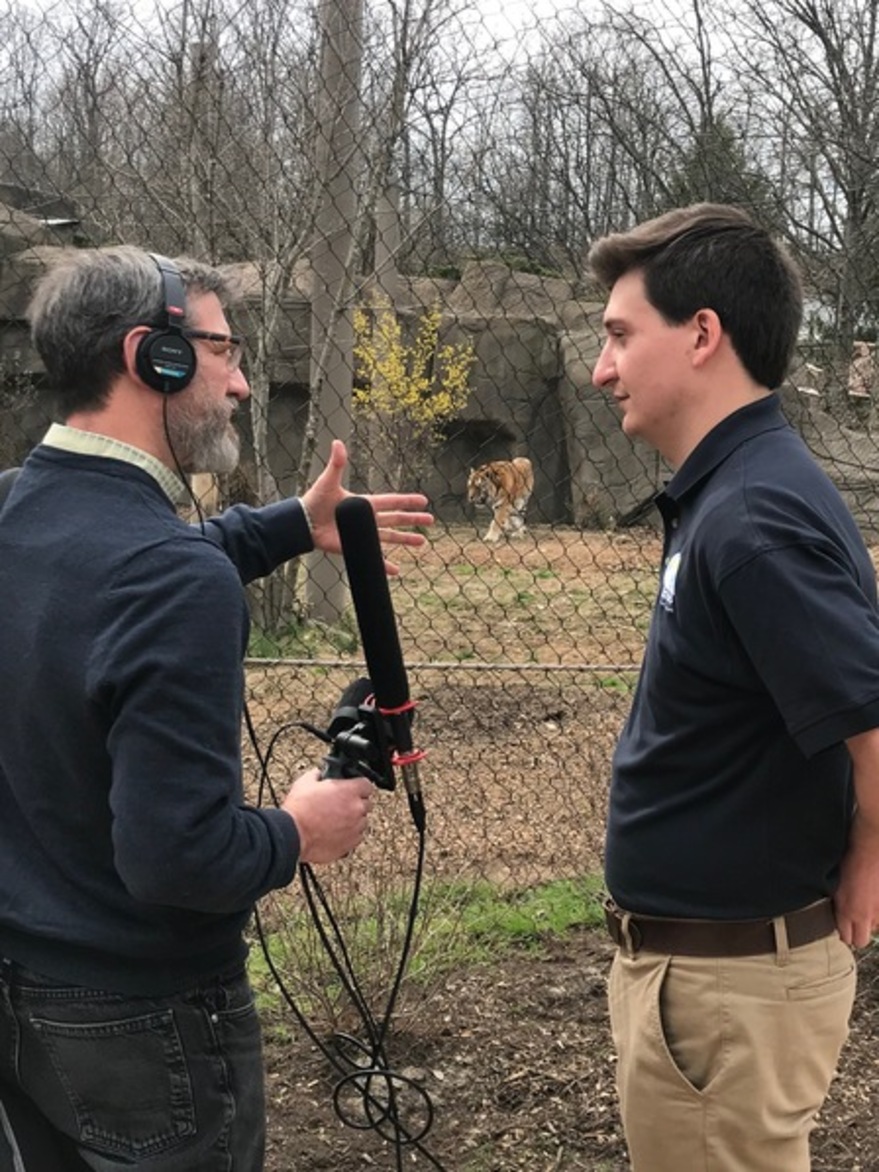Research Round-Up: Graduate Student Research at your Zoo
Posted on Monday, June 1st, 2020
Did you know that Cleveland Metroparks Zoo (CMZ) staff scientists and graduate students are working every day to improve the health and welfare of animals through scientific research?
Over the past 10 years, five students have completed PhD dissertations under the advisement of CMZ staff scientists and in partnership with Case Western Reserve University’s department of biology as part of our CMZ-CWRU graduate training program in zoo science. CMZ’s Department of Conservation & Science currently hosts three graduate students with research interests related to animal behavior and health. Let’s learn more about their research projects below!

Have you had the pleasure of looking a 16-foot-tall giraffe eye-to-eye while he delicately slurps a piece of romaine lettuce out of your hand?
Many of you probably already know that you can do just that at the Ben Gogolick Giraffe Encounter. Of course, you may not realize that a lot of research has gone into figuring out when to offer these feedings and how this unique guest experience affects the behavior of our giraffe. For the past three years, one of our graduate students—Laura Bernstein-Kurtycz—has examined how the giraffe feeding deck has impacted the behavior and space use of our giraffe herd. Laura found that altering the public feeding schedule to include regular 30-minute breaks between feeding sessions helped to promote more naturalistic behaviors in the giraffe herd and greatly reduced anticipatory pacing behavior.
The bulk of Laura’s doctoral dissertation research examines the behavior, space use, cognition, and welfare of CMZ’s bear species, including Andean, sloth, grizzly, and black bears. One of Laura’s current projects seeks to understand how different conditions influence bear behavior, such as visitor density, construction projects, and night events at the zoo. Amazingly, Laura is also working with keepers to train our grizzly and black bears to use a touchscreen to complete various tasks! This research will provide new and important insights into bear cognition and welfare.

Do you ever wonder what zoo animals do at night when all of the guests and keepers have gone home?
Another one of our graduate students—Kaylin Tennant—is studying the daytime and nighttime behavior of our elephant herd. This information is incredibly useful for understanding how our elephants utilize their African Elephant Crossing habitat and how these social animals interact with one another, especially after dark. Interestingly, the nighttime observations (which are recorded with a camera system) have revealed that the elephants take turns standing guard while the others sleep—just as they do in the wild! In addition to the elephant behavioral monitoring, Kaylin’s dissertation research focuses on gorilla behavior, social dynamics, and diet.
She is especially interested in factors that influence regurgitation and reingestion (also known as “R/R”)—a behavior in which gorillas bring up their ingested food and re-consume it. Although the implementation of a low starch, high fiber diet (developed in 2009 via the dissertation research of the Zoo’s own Associate Curator of Animals Dr. Elena Less) has eliminated R/R behavior in the Zoo’s gorillas, the underlying causes of the behavior remain a mystery.
Kaylin is currently studying the physiological mechanisms behind R/R to better understand why this behavior is more common in certain gorillas and whether R/R is linked to a particular diet, food items, or other factors. This research will help fill major gaps in our understanding of R/R behavior which is necessary to ensure that we continue to provide the best care to and management of our animals at CMZ and at zoos across the country.

Did you know that Giant Pacific octopuses can use tools to solve complex problems?
One of our graduate students—Charles Ritzler—has been working with keepers to train our Giant Pacific octopus (“Pancake”) to retrieve food from a locked box using a special key! In addition to studying this tool use behavior, Charles is collecting dermal secretions from Pancake with the aim of creating a novel method for assessing octopus welfare.
Charles’s dissertation research seeks to develop innovative methods for understanding how zoo animals use their habitats and how exhibit design impacts animal welfare. For more than a year, Charles studied tiger behavior and space use when the tigers had the choice to move among multiple sub-exhibits of Rosebrough Tiger Passage.
He found that tigers were more active and showed more investigative behaviors when they had the choice to move among multiple sub-exhibits. Charles is currently comparing the behavior and stress hormones of our Amur leopard, snow leopards, and red panda before and after the completion of the Asian Highlands exhibit, and he will also assess how the completion of the new Daniel Maltz Rhino Reserve affects rhino behavior and space use.
Finally, using a combination of drones and special cameras, Charles aims to construct 3D models of zoo exhibits in order to better quantify the vertical space available to animals and assess how animals move through their exhibits. Ultimately, his research highlights the importance and effects of exhibit design and complexity on animal behavior and welfare.

I hope you have enjoyed learning about some of the research happening here at CMZ. As you can see, our graduate research associates are extremely busy and are continuing to conduct high-quality research that improves our understanding of animal biology, behavior, and welfare. Please keep your eyes open for additional blog entries related to the excellent research and conservation projects at Cleveland Metroparks Zoo!


